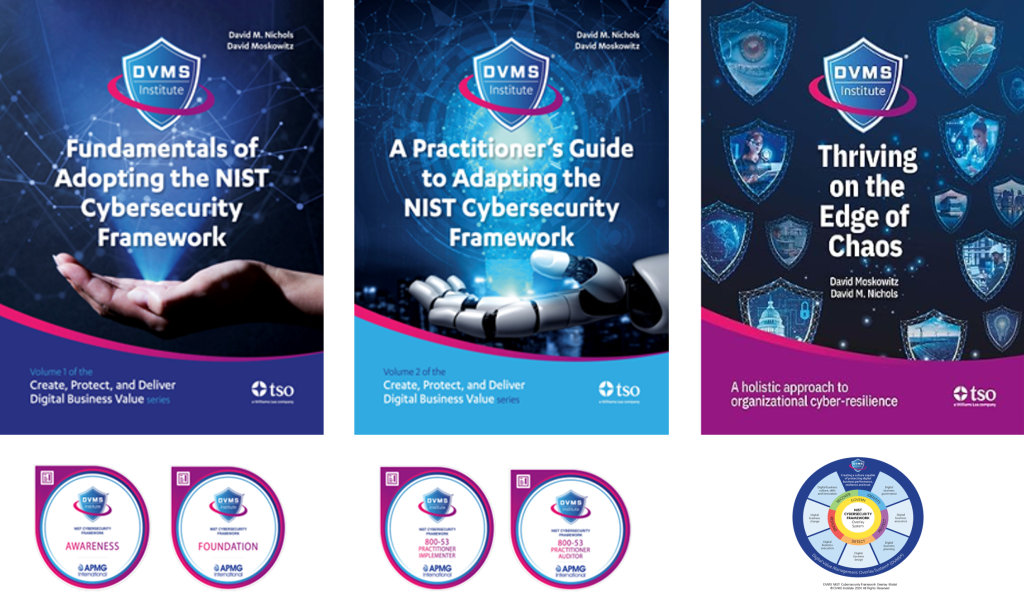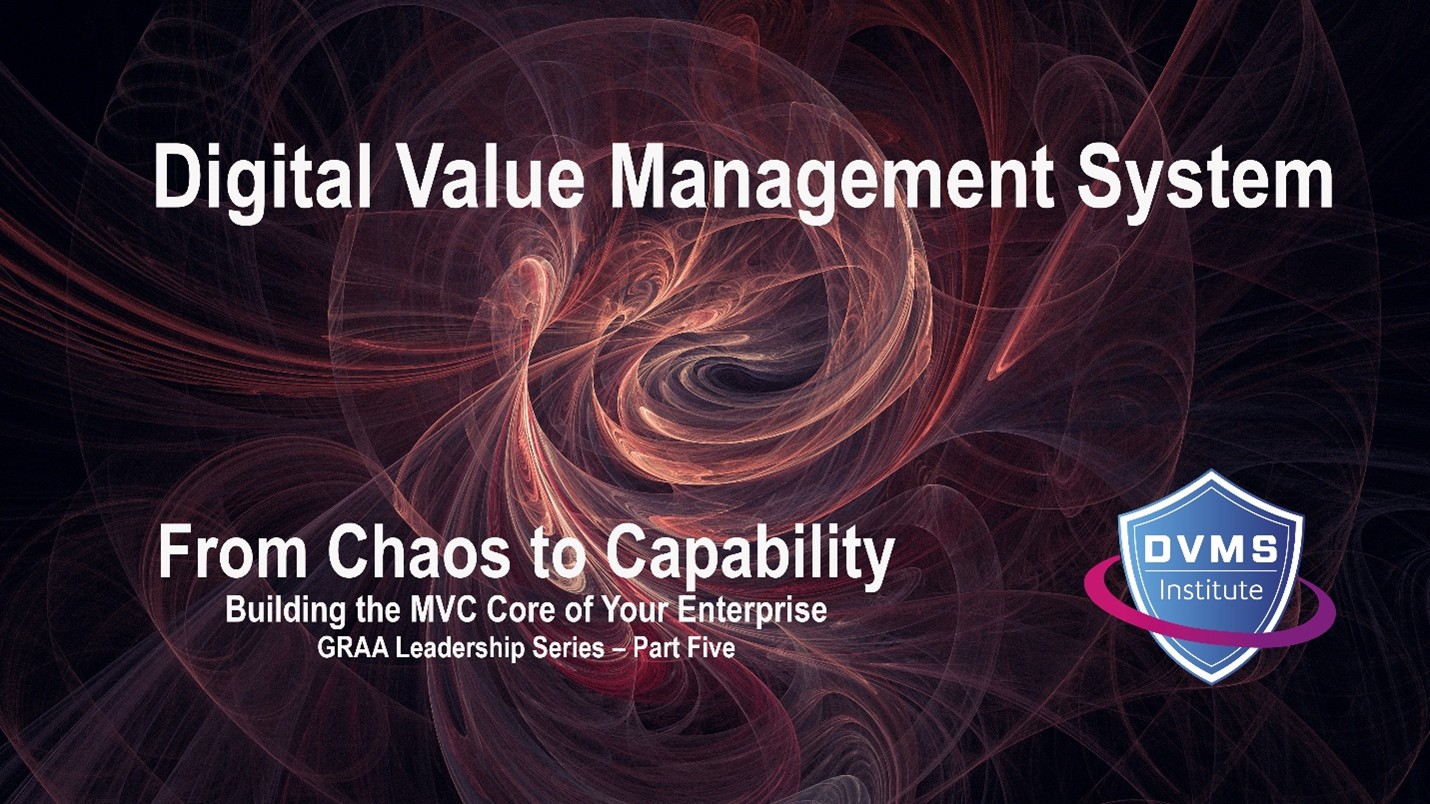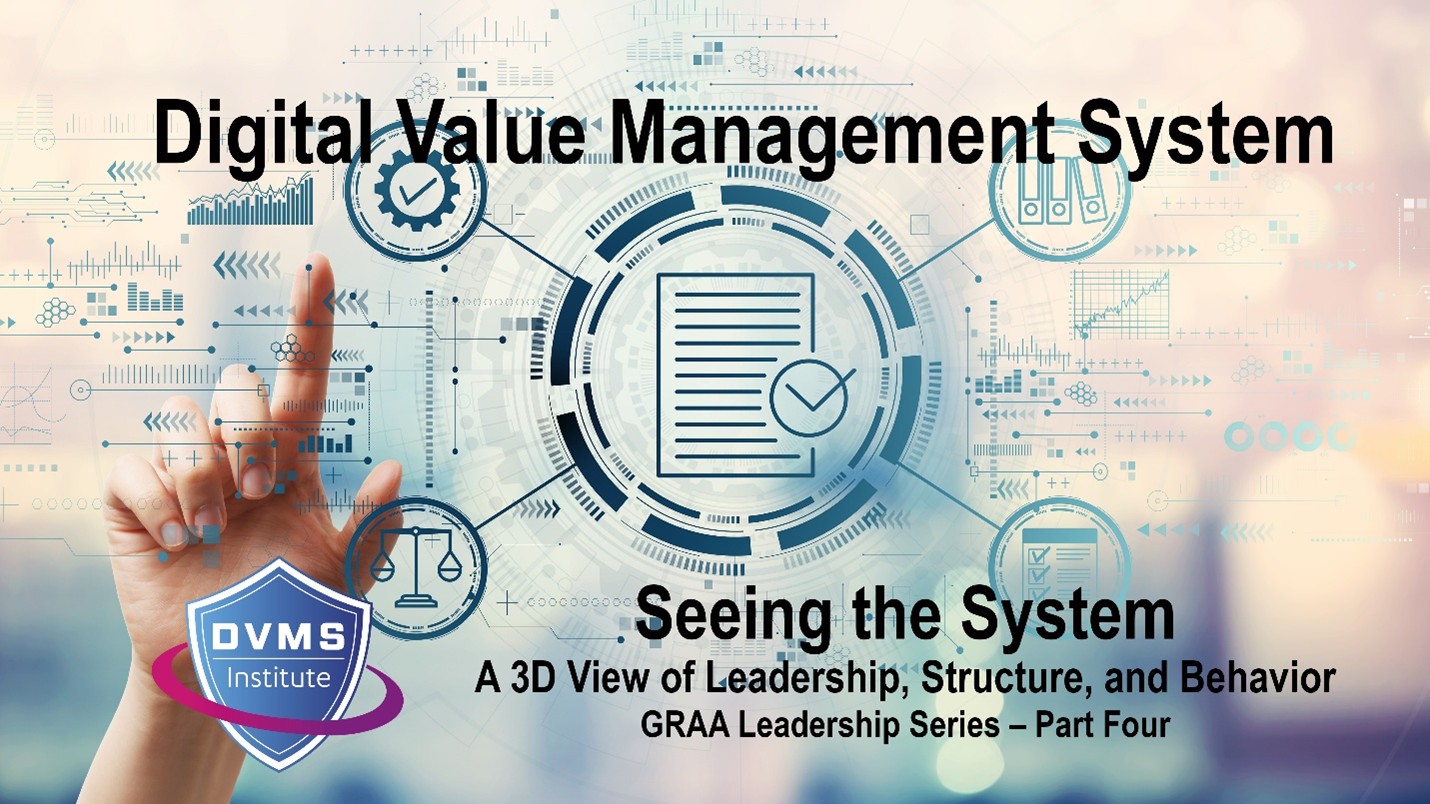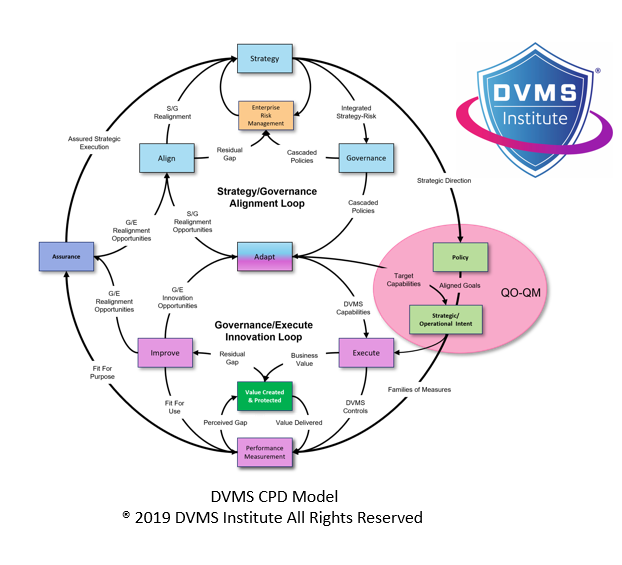From Policy to Execution – How DVMS Bridges the Last Mile with Policy-as-Code
David Nichols – Co-Founder and Executive Director of the DVMS Institute
The Challenge: Turning Policy into Execution
In today’s hyper-connected, risk-saturated economy, executives face a sobering reality: the challenge isn’t creating policies; it’s implementing them. We are no longer judged by the policies we develop but by the outcomes we deliver in real time, across complex and ever-changing environments. Whether in government, financial services, healthcare, manufacturing, or critical infrastructure, the critical question is this: can we prove that our commitments are consistently delivered, everywhere, every day? This is where organizations need more than tools — they need a system that bridges policy to execution.
Introducing DVMS: A Governance Backbone
The Digital Value Management System (DVMS) provides an enterprise-wide governance layer that helps organizations bridge the gap between policy and practice. When used with Policy-as-Code (PaC), DVMS goes far beyond the scope of just being a technical tool—it’s a vital governance framework that aligns strategic objectives, operational activities, and measurable results.
Policy-as-Code: Automation with Limits
Policy-as-Code involves encoding rules — such as security controls, compliance mandates, and data policies — into machine-readable code that can be automatically enforced, tested, and audited. Tools like Open Policy Agent, Prisma Cloud, and HashiCorp Sentinel enable organizations to embed declarative policy enforcement directly into pipelines, infrastructures, and applications. While PaC offers efficiency, speed, and automation, it is not, by itself, a comprehensive governance solution. Without strategic integration, PaC risks becoming just another isolated initiative, disconnected from the organization’s risk appetite, business priorities, and assurance goals. This is precisely where DVMS plays its most vital role.
The DVMS Approach: Governance, Resilience, Assurance
At its core, the DVMS combines Governance (the why), Resilience (the how), and Assurance (the what works) into a unified, adaptable approach. It employs the DVMS CPD (Create, Protect, Deliver) Model to turn governance intent into actionable minimum viable capabilities mapped across systems, processes, and people. Central to this model is the QO-QM (Question-Outcome / Question-Metric) technique, which offers a continuous cycle of inquiry, validation, and evidence. Through QO-QM, organizations can assess if they are reaching desired outcomes, identify which metrics show success, and demonstrate assurance consistently, not just intermittently. This is what distinguishes DVMS from traditional governance models.
Regulatory Alignment and Real-World Challenges
This alignment is not just theoretical; it supports the objectives of regulatory mandates like Executive Order 13694, issued under the Trump administration. That order urged federal agencies and suppliers to move from manual checklist compliance to automated, continuous, and verifiable enforcement of security policies. The Trump administration’s cyber strategy focused on modernizing federal cybersecurity, emphasizing supply chain security, and introducing machine-readable, enforceable policies across agencies, laying the foundation for today’s push toward automation and traceability. However, as automation and assurance become essential expectations, leaders must recognize the real-world challenges involved. Skill gaps remain a major barrier, as engineering, security, and compliance teams need to develop proficiency in both governance principles and automation techniques. Cultural resistance also poses a significant challenge; shifting from manual oversight to ongoing assurance requires a change in mindset, not just new tools. Data quality issues can weaken evidence-based assurance, and integrating these capabilities into legacy systems can be complex and costly. Additionally, there is a risk of “question fatigue,” where teams become overwhelmed by a continuous stream of inquiries if governance discipline is lacking.
DVMS in Practice: Transforming Outcomes
What sets DVMS apart is its anticipation of these challenges. It reframes compliance not as a burdensome requirement, but as a byproduct of operational excellence. Governance sets the purpose, resilience enables adaptation, and assurance validates effectiveness through the use of the QO-QM technique. This ensures that every control and measure is explicitly tied to an outcome and validated through evidence, not assumption.
Consider, for example, a multinational bank adopting Policy-as-Code to automate regulatory compliance across its cloud environments. Without DVMS, the effort is likely to lead to fragmented adoption, inconsistent interpretations of policy intent, and automation drift disconnected from governance oversight. Audits devolve into reactive exercises, scrambling to piece together evidence after the fact, and compliance remains brittle rather than resilient. With DVMS in place, however, QO-QM ensures that every policy is mapped to clear outcomes and metrics. Assurance loops transform operational data into continual validation, while governance overlays align technical automation with strategic objectives. Leadership gains real-time, evidence-backed confidence that compliance and resilience are not merely asserted but actively delivered.
Beyond Compliance: Strategic Advantage
The benefits extend well beyond compliance. Pairing DVMS with Policy-as-Code provides the agility to respond to evolving expectations and stakeholder needs while maintaining governance discipline. It strengthens operational resilience, ensuring that teams can adapt to change without compromising assurance. It positions the organization for strategic differentiation, enabling it to demonstrate to customers, partners, and regulators that it is not only compliant but also trustworthy and transparent. In this way, the DVMS approach reframes governance as a dynamic enabler of innovation, resilience, and trust.
Looking Ahead: The Adaptive Edge
Looking ahead, the future points toward the DVMS Adaptive Edge Platform (AEP), which focuses on assessing organizational culture, identifying gaps in Minimum Viable Capabilities (MVC), and evaluating both hard and soft skills. These outputs surface critical risks to organizational resilience and highlight areas that could benefit from automation and Policy-as-Code implementation. This evolution empowers organizations to automate the traceability between policy, control, and outcome, streamline audits, reduce costs, and enhance agility without sacrificing governance discipline. Even before achieving this next phase, the DVMS approach already provides what future standards will demand: an operationalized, evidence-based, continual, and automated approach to governance, resilience, and assurance.
Final Word: Leadership at the Center
Ultimately, DVMS is not just about technology; it’s about leadership. Successfully implementing Policy-as-Code and continual assurance demands committed leadership, effective data management, and ongoing investments in cultural alignment and cross-functional collaboration. For leaders seeking to close the gap between policy and action, the DVMS approach provides a reliable, scalable way forward. It invites leaders to view governance not as a constraint but as a foundation for innovation, resilience, and trust, driven by evidence rather than assumptions. Those prepared to lead in this new era will find DVMS ready to help them succeed.
About the Author

Dave is the Executive Director of the DVMS Institute.
Dave spent his “formative years” on US Navy submarines. There, he learned complex systems, functioning in high-performance teams, and what it takes to be an exceptional leader. He took those skills into civilian life and built a successful career leading high-performance teams in software development and information service delivery.
In today’s digitally driven economy, cyber disruptions are no longer an “if” but a “when.”
The DVMS Institute’s Certified Training Programs teach organizations the skills to build a Holistic and Culture-Aligned Overlay System capable of coordinating Adaptive, Cyber O
The DVMS Institute’s Certified Training Programs teach organizations the skills to build a Holistic and Culture-Aligned Overlay System capable of coordinating Adaptive, Governance, Resilience and Assurance (GRA) actions across a Complex Digital Ecosystem.
Achieving true cyber operational resilience requires seamless alignment between organizational Strategy, Governance, and Operations, underpinned by a culture dedicated to sustaining and continuously innovating the Creation, Protection And Delivery of organizational digital value.

TThe DVMS positions cyber resilience as a strategic, enterprise-wide capability powered by your best practice systems (NISTCSF, ITSM, GRC etc.) and the DVMS MVC, CPD, and 3D Knowledge models.
This systems-based approach to cyber operational resilience demands active engagement from all members of the Digital Ecosystem. Each member plays a distinct role in proactively identifying and mitigating the systemic risks that threaten digital business operations.
This adaptive, forward-looking approach to Governance, Resilience, and Assurance (GRA) positions businesses to:
- Maintain Operational Stability Amidst Constant Digital Disruption
- Drive Agility and Trust Across Your Digital Ecosystem
- Satisfy Critical Regulatory and Certification Requirements
- Leverage Cyber Resilience as a Competitive Advantage
DVMS Explainer Videos
- Architecture Video: David Moskowitz explains the DVMS System
- Case Study Video: Dr. Joseph Baugh Shares His DVMS Story.
- Overlay Model – What is an Overlay Model
- ZX Model – The MVC’s that power operational resilience
- CPD Model – Adaptable governance and assurance
- 3D Knowledge Model – Enabling holistic organizational learning
- FastTrack Model – A phased approach to cyber resilience
Digital Value Management System® is a registered trademark of the DVMS Institute LLC.
® DVMS Institute 2025 All Rights Reserved




